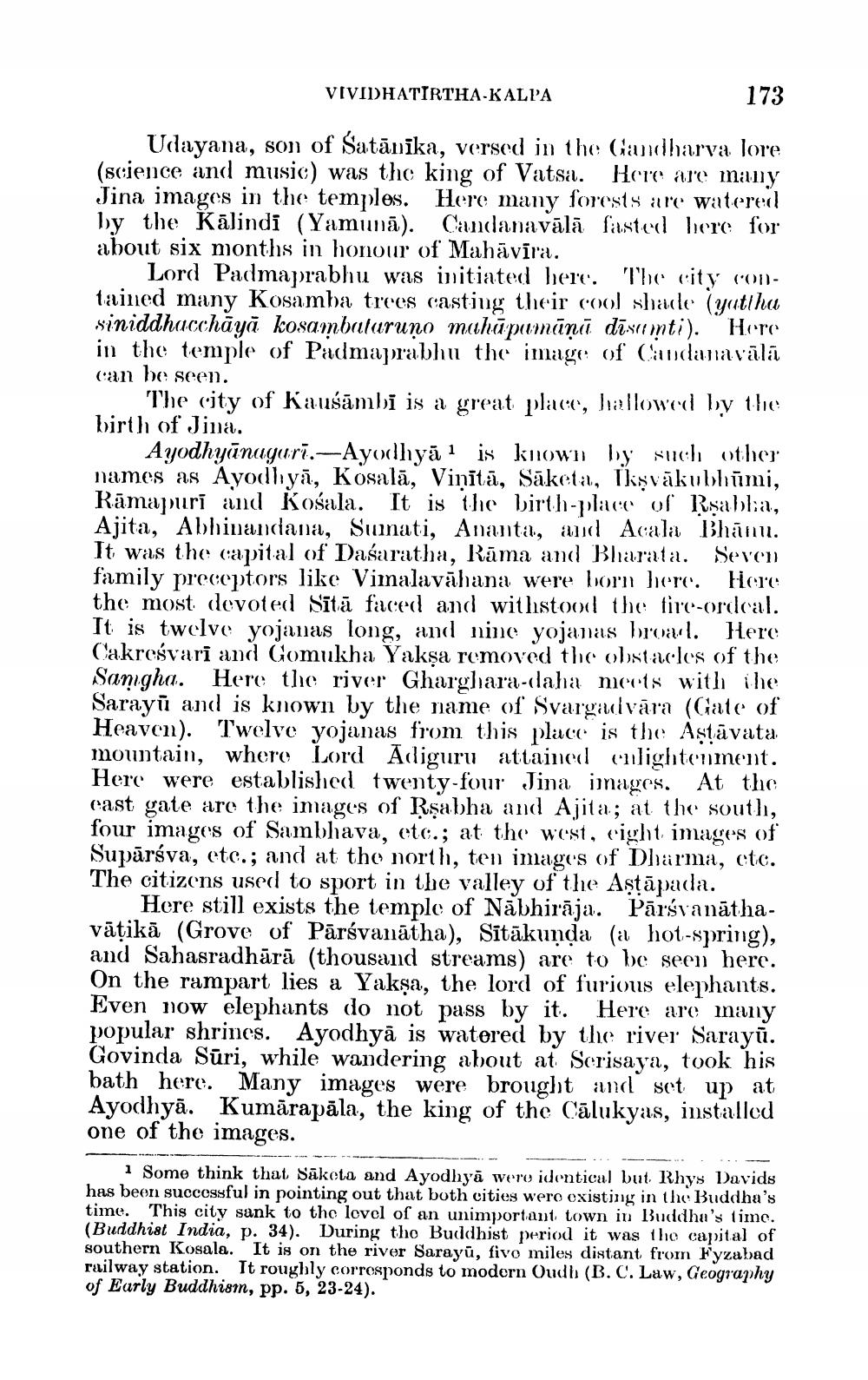________________
173
Udayana, son of Satānika, versed in the Gandharva lore (science and music) was the king of Vatsa. Here are many Jina images in the temples. Here many forests are watered by the Kalindi (Yamuna). Candanavālā fasted here for about six months in honour of Mahāvīra.
VIVIDHATIRTHA-KALPA
Lord Padmaprabhu was initiated here. The city contained many Kosamba trees casting their cool shade (yattha siniddhacchaya kosambataruno mahāpumānā dīsamti). Here in the temple of Padmaprabhu the image of Candanavālā can be seen.
The city of Kausāmbi is a great place, hallowed by the birth of Jina.
Ayodhyanagari.-Ayodhya is known by such other names as Ayodhya, Kosala, Vinītā, Saketa, Ikṣvākubhūmi, Ramapuri and Kosala. It is the birth-place of Rsabha, Ajita, Abhinandana, Sunati, Ananta, and Acala Bhanu. It was the capital of Dasaratha, Rama and Bharata. Seven family preceptors like Vimalavahana were born here. Here the most devoted Sita faced and withstood the fire-ordeal. It is twelve yojanas long, and nine yojanas broad. Here Cakreśvari and Gomukha Yakṣa removed the obstacles of the Samgha. Here the river Gharghara-daha meets with the Sarayu and is known by the name of Svargadvara (Gate of Heaven). Twelve yojanas from this place is the Astavata mountain, where Lord Adiguru attained enlightenment. Here were established twenty-four Jina images. At the east gate are the images of Rsabha and Ajita; at the south, four images of Sambhava, etc.; at the west, eight images of Suparśva, etc.; and at the north, ten images of Dharma, etc. The citizens used to sport in the valley of the Aṣṭāpada.
Here still exists the temple of Nabhiraja. Pārsvanathavātikā (Grove of Parsvanatha), Sitakunda (a hot-spring), and Sahasradhārā (thousand streams) are to be seen here. On the rampart lies a Yaksa, the lord of furious elephants. Even now elephants do not pass by it. Here are many popular shrines. Ayodhya is watered by the river Sarayu. Govinda Sūri, while wandering about at Scrisaya, took his bath here. Many images were brought and set up at Ayodhya. Kumarapala, the king of the Calukyas, installed one of the images.
1 Some think that Saketa and Ayodhya were identical but Rhys Davids has been successful in pointing out that both cities were existing in the Buddha's time. This city sank to the level of an unimportant town in Buddha's time. (Buddhist India, p. 34). During the Buddhist period it was the capital of southern Kosala. It is on the river Sarayu, five miles distant from Fyzabad railway station. It roughly corresponds to modern Oudh (B. C. Law, Geography of Early Buddhism, pp. 5, 23-24).




